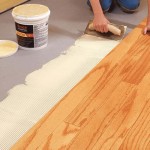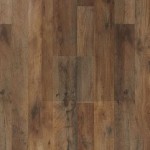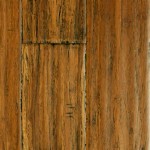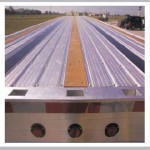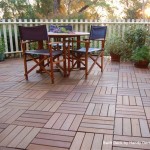Should You Glue Down Laminate Flooring?
Laminate flooring has become a popular choice for residential and commercial spaces due to its affordability, durability, and ease of installation. However, when considering laminate flooring installation, a crucial decision arises: should you glue it down or opt for a floating installation method? This article delves into the pros, cons, and specific scenarios where gluing down laminate flooring may be the preferred approach, providing a comprehensive overview to inform your flooring project decisions.
Generally, laminate flooring is designed as a floating floor. This means the planks interlock and "float" above the subfloor without being directly attached. This method allows the floor to expand and contract with temperature and humidity changes, preventing buckling or gapping. However, certain situations warrant considering a glue-down installation to enhance performance and stability. Understanding these circumstances and the implications of each method is crucial for a successful and long-lasting flooring installation.
When Gluing Down Laminate Flooring Is Recommended
While floating installations are generally preferred, there are specific instances where a glue-down approach becomes advantageous. These situations typically involve high-traffic areas, moisture-prone environments, or the need for increased structural integrity.
High-Traffic Areas: In areas subjected to heavy foot traffic, such as commercial buildings, retail spaces, or busy households, the constant movement can cause stress on the locking mechanisms of floating laminate floors. This stress can lead to separation between planks, creating unsightly gaps and potential tripping hazards. Gluing down the laminate floor provides a more stable and secure surface, minimizing movement and extending the lifespan of the flooring in high-traffic zones. The adhesive creates a bond between the laminate planks and the subfloor, effectively distributing the load and reducing the strain on individual locking mechanisms.
Areas with High Moisture: While laminate flooring is generally water-resistant, it is not entirely waterproof. In areas prone to moisture, such as bathrooms, kitchens, or basements, water seepage can damage the core of the laminate planks, causing swelling, warping, and ultimately, floor failure. Gluing down the laminate floor creates a moisture barrier between the planks and the subfloor, preventing water from penetrating and causing damage. Using a moisture-resistant adhesive further enhances this protection. It's crucial to note that even with a glue-down installation and moisture-resistant adhesive, proper ventilation and moisture control measures are still essential to prevent long-term moisture issues.
Subfloor Irregularities: Floating laminate floors require a relatively level subfloor to ensure proper installation and prevent unevenness. Minor imperfections can be addressed with underlayment, but significant irregularities can cause the floor to flex, creak, or even damage the locking mechanisms. Gluing down the laminate floor can help compensate for minor subfloor imperfections by providing a more solid and stable base. The adhesive fills in small gaps and irregularities, creating a smoother and more even surface. However, it's important to address significant subfloor issues before installation, as gluing down the laminate floor will not solve underlying structural problems. A thorough subfloor preparation, including leveling and patching, is crucial for a successful glue-down installation.
Seamless Transition: In situations where you want a perfectly seamless transition between rooms or different flooring types, gluing down the laminate offers an advantage. Floating floors typically require transition strips to accommodate expansion gaps at doorways or where they meet other flooring materials. Gluing the laminate allows you to eliminate these transition strips, creating a cleaner and more modern look. This is particularly desirable in open-concept layouts where a continuous flooring surface is preferred. Careful planning and precise installation are essential to achieve a seamless transition with a glue-down laminate floor.
The Drawbacks of Gluing Down Laminate Flooring
Despite its benefits in specific scenarios, gluing down laminate flooring also has several drawbacks that need careful consideration before making a decision.
Installation Complexity and Cost: Installing a glue-down laminate floor is generally more complex and time-consuming than a floating installation. It requires precise application of adhesive, careful alignment of planks, and specialized tools. This increased complexity often translates to higher installation costs, especially if you hire a professional installer. Furthermore, the adhesive itself adds to the overall material cost of the project. The need for specialized skills and equipment can make a DIY project more challenging, potentially leading to errors and increased expenses if not executed properly.
Difficulty in Repair and Replacement: If a plank is damaged in a glue-down floor, repairing or replacing it can be significantly more difficult than with a floating floor. Removing a glued-down plank often requires specialized tools and techniques to avoid damaging adjacent planks. The process can be messy and time-consuming, and it may be challenging to find a perfect color match for replacement planks. With a floating floor, individual planks can be easily removed and replaced without affecting the surrounding floor. This ease of repair and replacement is particularly beneficial in areas prone to damage or spills.
Subfloor Requirements: While gluing down can compensate for minor subfloor imperfections, it also demands a very clean and smooth subfloor. Any debris, dust, or unevenness can interfere with the adhesive bond, leading to weak spots and potential floor failure. Thorough subfloor preparation is crucial for a successful glue-down installation, which can add to the overall time and expense of the project. The subfloor must be meticulously cleaned, leveled, and primed before applying the adhesive. This preparation is often more extensive than what is required for a floating floor installation.
Limited Expansion and Contraction: Gluing down laminate flooring restricts its natural expansion and contraction due to temperature and humidity changes. This can lead to stress on the floor and potentially cause buckling or cracking, especially in areas with significant fluctuations in temperature and humidity. While the adhesive provides a strong bond, it also prevents the floor from moving freely. In contrast, a floating floor is designed to accommodate these fluctuations, minimizing the risk of damage. Therefore, gluing down laminate is generally not recommended in areas with extreme temperature or humidity variations.
Potential for Adhesive Issues: Choosing the right adhesive is crucial for a successful glue-down laminate installation. Using the wrong type of adhesive can lead to weak bonds, adhesive bleed-through, or even damage to the laminate planks. It's important to select an adhesive specifically designed for laminate flooring and to follow the manufacturer's instructions carefully. Improper adhesive application can also cause problems, such as uneven spreading or excessive adhesive squeeze-out. These issues can affect the appearance and performance of the floor. Furthermore, some adhesives may contain volatile organic compounds (VOCs), which can contribute to indoor air pollution. Choosing a low-VOC adhesive is recommended to minimize health risks.
Factors to Consider Before Deciding
The decision to glue down laminate flooring should not be taken lightly. Several factors need careful consideration to ensure the chosen method is appropriate for the specific project and environment.
Subfloor Condition: Assess the subfloor thoroughly for levelness, cleanliness, and structural integrity. Minor imperfections can be addressed, but significant irregularities may require extensive subfloor repairs. If the subfloor is severely damaged or uneven, a floating installation may be a more practical option. A professional inspection can help determine the suitability of the subfloor for a glue-down installation.
Moisture Levels: Measure the moisture content of the subfloor and the surrounding environment. High moisture levels can compromise the adhesive bond and lead to floor failure. Implement moisture control measures, such as a vapor barrier, before installing the floor. Consider the long-term moisture exposure of the area and whether a glue-down installation with a moisture-resistant adhesive is necessary.
Traffic Volume: Evaluate the expected foot traffic in the area. High-traffic zones may benefit from the added stability of a glue-down floor. However, lower-traffic areas may not require the extra cost and complexity of a glue-down installation. Consider the potential for furniture movement and heavy loads on the floor, as these factors can also impact the performance of the flooring.
Budget Constraints: Compare the costs of a floating installation versus a glue-down installation, including materials, labor, and subfloor preparation. A glue-down installation is typically more expensive due to the added complexity and the need for specialized tools and expertise. Weigh the cost benefits against the potential advantages of a glue-down floor in the specific application.
Long-Term Maintenance: Consider the long-term maintenance requirements of each installation method. A glue-down floor can be more difficult to repair or replace if damaged. A floating floor offers greater flexibility and ease of maintenance. Assess the potential for damage and the cost of repairs when making the decision.
By carefully evaluating these factors, homeowners and contractors can make an informed decision about whether to glue down laminate flooring. While a glue-down installation offers enhanced stability and moisture resistance in certain situations, it also comes with added complexity, cost, and maintenance considerations. Understanding the pros and cons of each method is essential for achieving a successful and long-lasting flooring installation.

Laminate Flooring Or Glued Which Is Best

Pros Cons Of Glue Down Flooring Installation Floorset

Floating Vinyl Plank Flooring Vs Glue Down 99cent Floor

Glue Down Vs Floating Lvp Which Is Better Whole Cabinet Supply

Glue Down Vinyl Flooring Lifestepp

Glue Down Vs Floating Flooring Installation Which One Is Better Floorset

Floating Floor Vs Nail Down Slaughterbeck Floors Inc

Floating Floor Vs Nail Down Slaughterbeck Floors Inc

Glue Down Vs Floating Wood Floor Installation Finfloor

Can You Glue Down Solid Wood Flooring Hardwood Guide Reallyfloors America S Est
Related Posts


